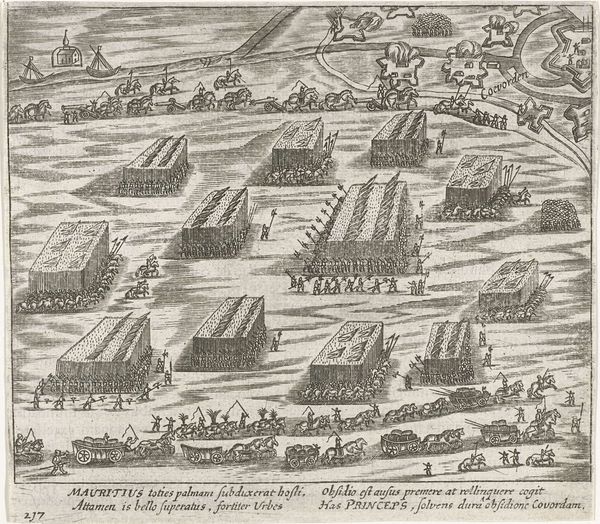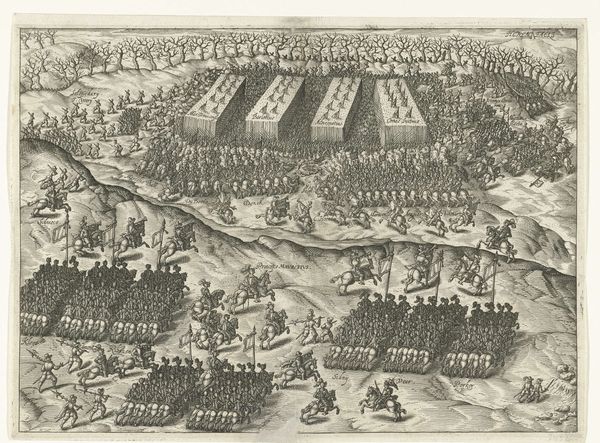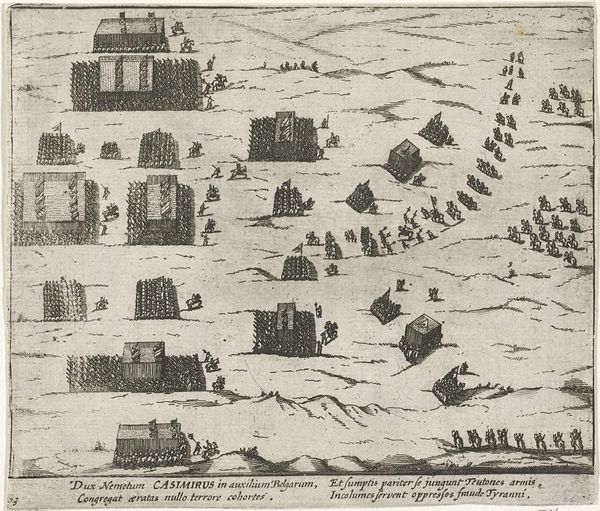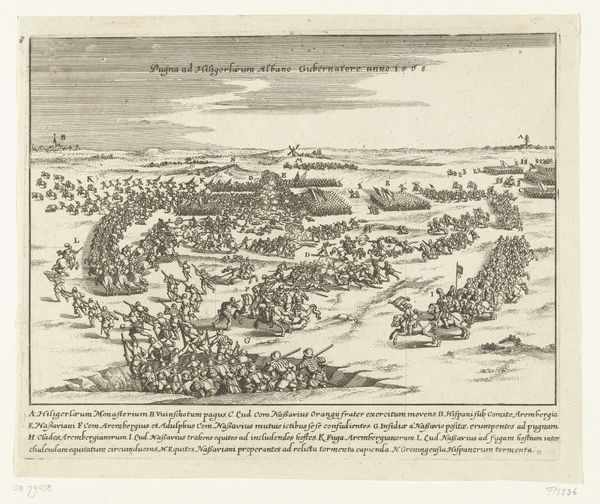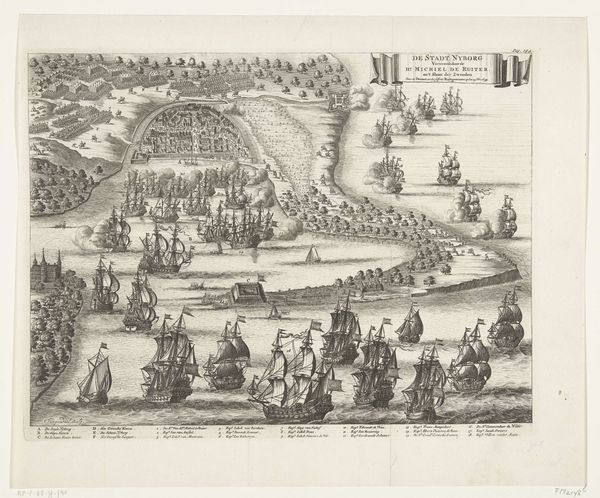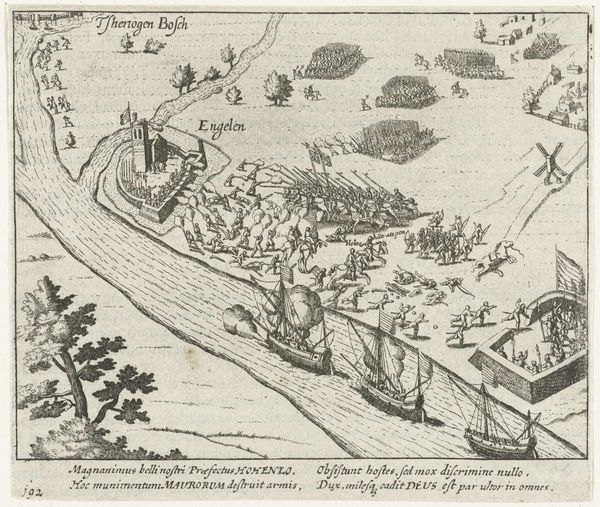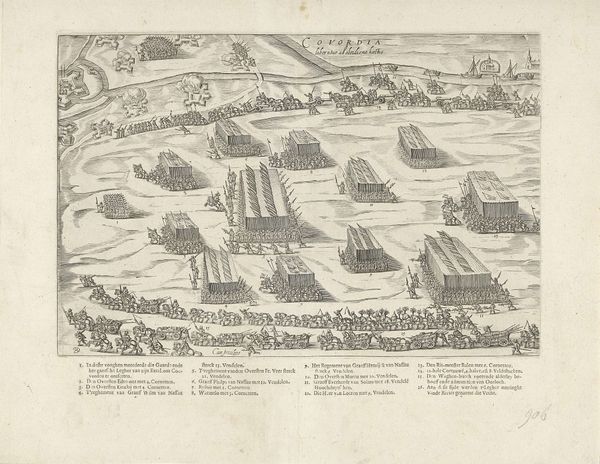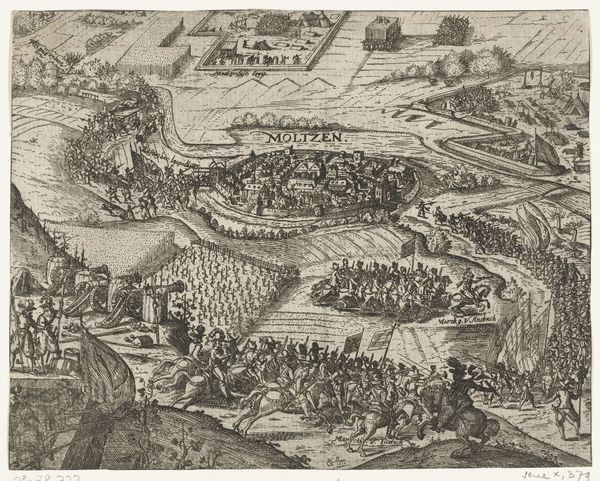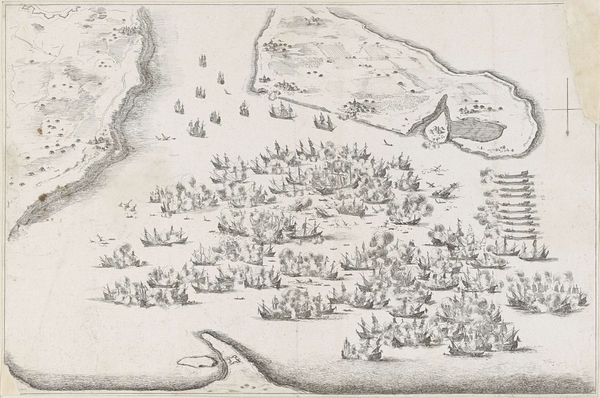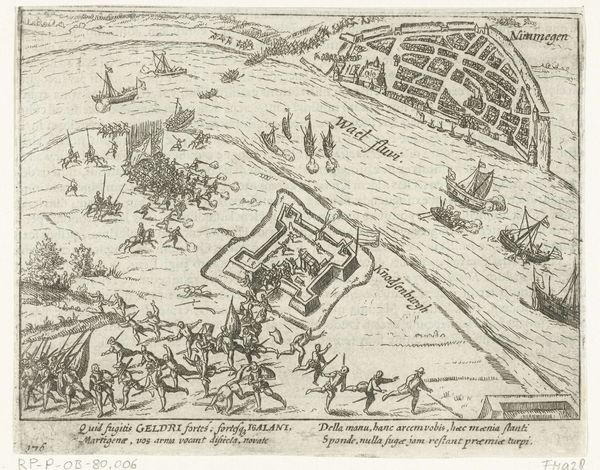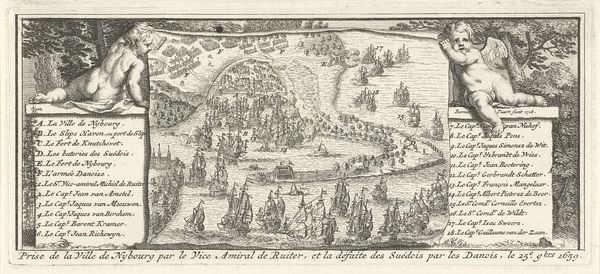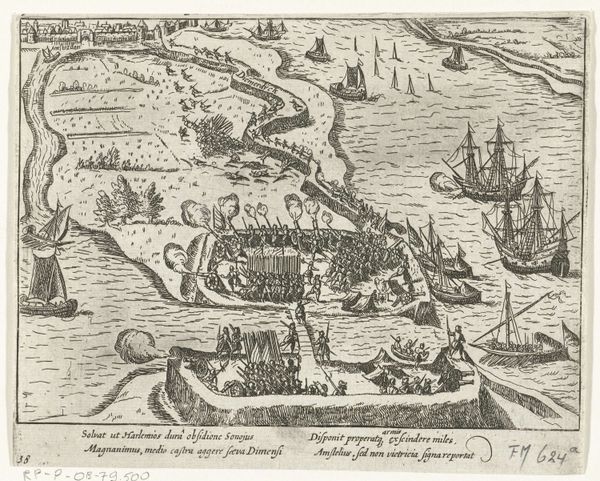
#
comic strip sketch
#
mechanical pen drawing
#
pen illustration
#
pen sketch
#
old engraving style
#
ink line art
#
linework heavy
#
pen-ink sketch
#
pen work
#
storyboard and sketchbook work
Dimensions: height 211 mm, width 311 mm
Copyright: Rijks Museum: Open Domain
Curator: I'm immediately struck by the incredible level of detail – a stippled expanse filled with miniature soldiers, each rendered with such deliberate clarity, despite the implied chaos of warfare. Editor: Indeed. This is an engraving titled "Coevorden door Maurits ontzet, 1594", dating from the early 1600s and created by Bartholomeus Willemsz. Dolendo. It depicts the relief of Coevorden by Maurice of Nassau, and it’s currently held in the Rijksmuseum. Curator: Looking at the visual language used to describe the battle, it feels like a carefully choreographed ballet. The arrangements of the troops and equipment remind me of the rigid, symbolic ordering often found in religious iconography of the period, only here employed in the service of military power. The linear forms create patterns that, though they depict conflict, possess a strangely calming geometry. Editor: Note the repeating rectangular forms – what do you make of the relationship between their formal aspects and symbolic charge? Their structured repetition seems like a testament to the organized power of the besieging army. Yet each carries its own markings: a kind of contained individuality amid the group effort. Curator: Those are war wagons or fortified carts – common defensive structures during sieges, almost like mobile forts. They represent a layered meaning: an outward face of solid impenetrability, designed to inspire dread in their opponents, and inward safety to galvanize morale. Beyond the individual wagon, their collective deployment suggests an almost inexorable determination to overcome adversity. The whole image speaks to an ideology, rather than just being about this specific siege. Editor: And the eye is directed to move across the flat plane, rather than pulled toward any focal point. We see all components on the field together – the soldiers, fortified carts, weapons and even a sketch of the distant town – as a single field of graphic data. This effect speaks to the period’s emergent interest in representing detailed information and lived environments – rather than singular emotional perspectives or specific events. Curator: This work makes me contemplate the relationship between the abstract order imposed upon war and the very human cost of conflict. Dolendo seems to capture the point where the machinery of warfare attempts to dominate lived reality, yet ultimately can’t suppress individual narratives – we infer humanity into the characters despite their simple representation. Editor: For me, it’s the almost relentless nature of the work’s patterned construction. It’s almost as if the sheer quantity of marks stands in for the uncountable aspects of military might, strategy, and endurance. Thank you for sharing your vision.
Comments
No comments
Be the first to comment and join the conversation on the ultimate creative platform.
